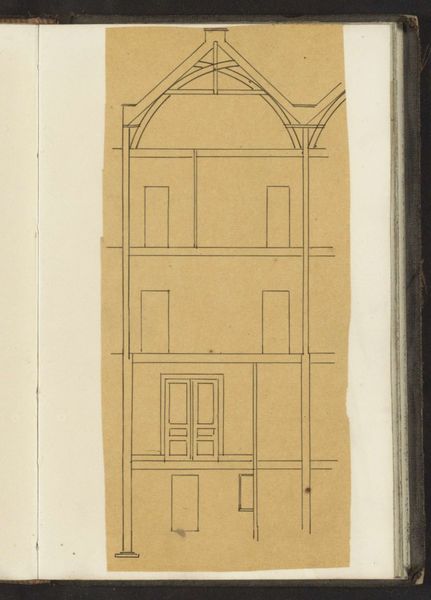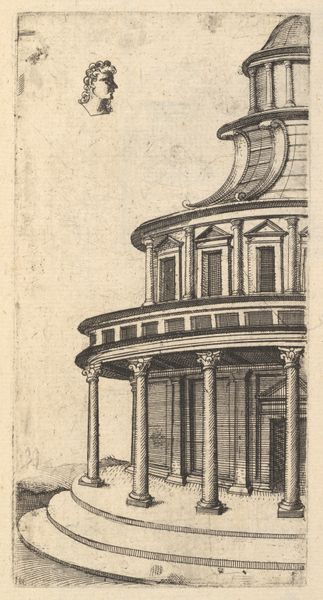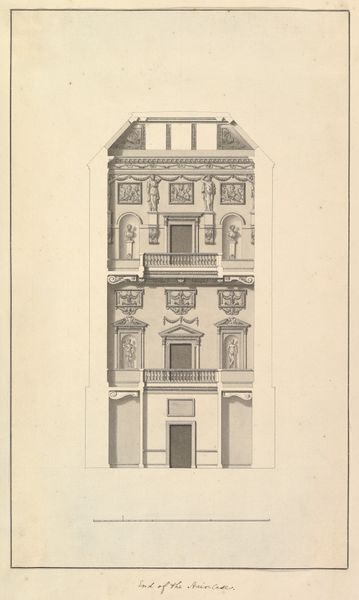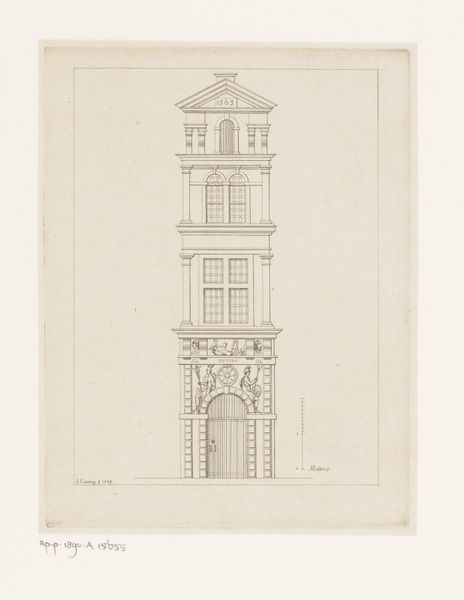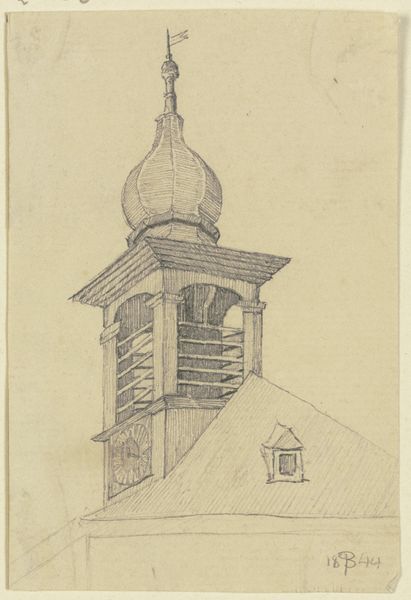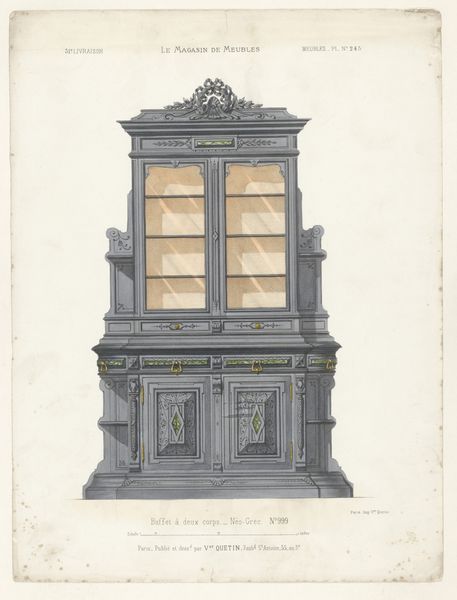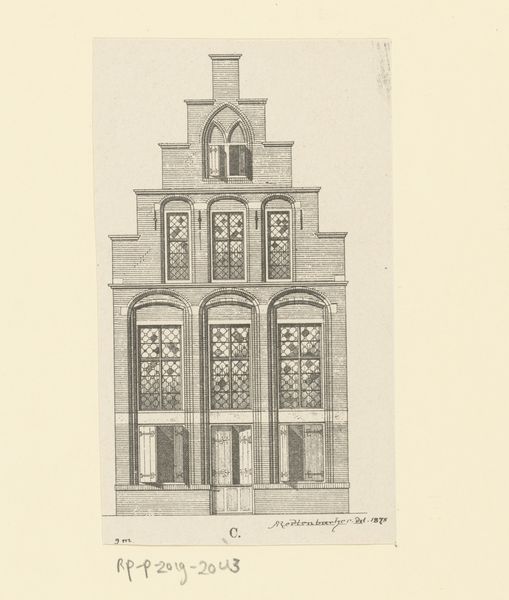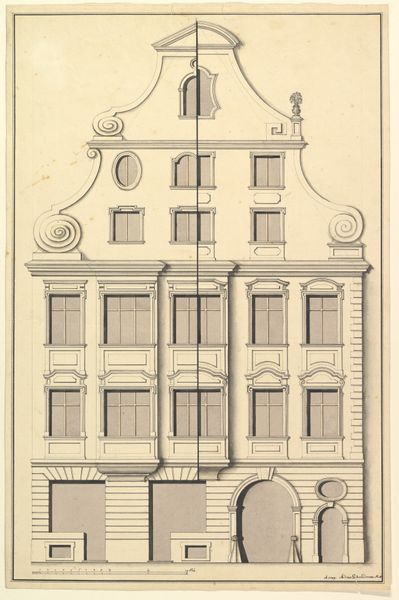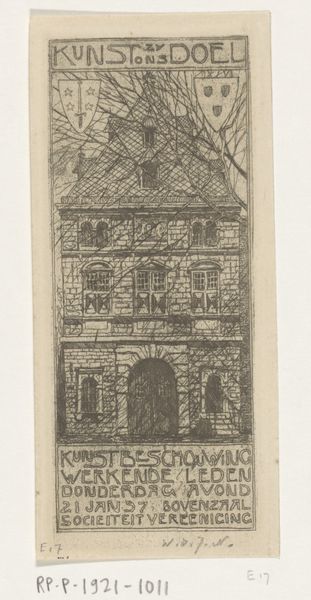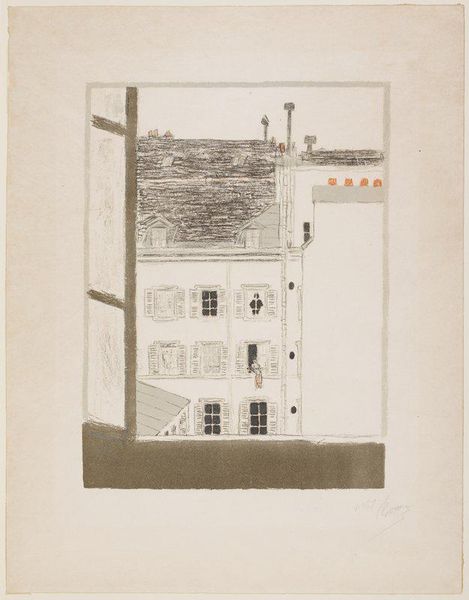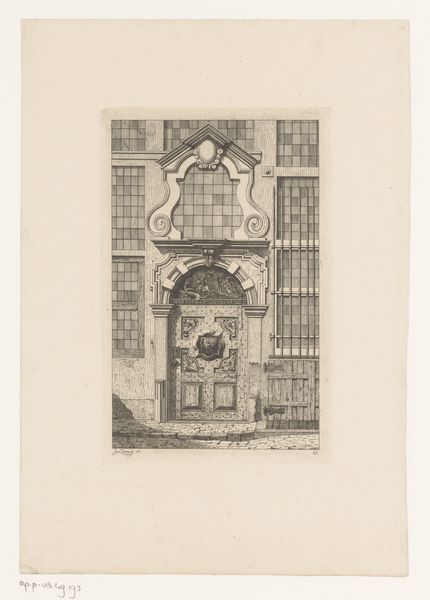
Woonhuis van Rembrandt Harmenszn. van Rijn in 1828 1828
0:00
0:00
drawing, ink, pen
#
drawing
#
neoclacissism
#
old engraving style
#
ink
#
pen-ink sketch
#
sketchbook drawing
#
pen
#
cityscape
#
realism
Dimensions: height 215 mm, width 130 mm
Copyright: Rijks Museum: Open Domain
This print, depicting Rembrandt’s house, was made by Isaac Lambertus Cremer van den Berch van Heemstede in 1828. It is an etching, a printmaking technique where lines are incised into a metal plate with acid, then inked and printed. The material nature of an etching plate allows for finely detailed work, as you can see in the rendering of the brickwork, windows, and decorative elements. Etching emerged alongside a growing market for art prints. It allowed artists to produce images in multiples, making art more accessible, but also creating a system where artists had to sell their work to survive. In this context, artists’ homes became important, especially as the cult of celebrity emerged around figures like Rembrandt. This seemingly straightforward image of a house thus speaks volumes about the production and consumption of art in the 19th century, a moment when the romantic notion of the artist-genius was taking hold. So even in a simple print like this, we can see the connections between art, labor, and the marketplace.
Comments
No comments
Be the first to comment and join the conversation on the ultimate creative platform.
